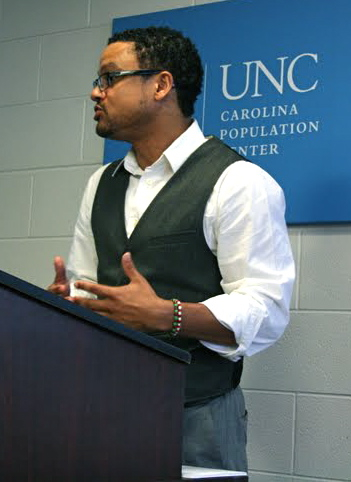Teaching is one of the truly exciting things about being a professor. I have been teaching – on and off – since 2001. My experience began as an undergraduate teaching assistant for an entry-level undergraduate course. It then expanded beyond the university to include teaching in a Saturday School Program for ‘at-risk’ students in second and third grade. I also helped design and implement a curriculum for an after school program for middle- and high school students. Although I did a few guest lectures along the way, I did not return to the university classroom until I was an advanced graduate student. In graduate school, I worked in seven classrooms. I served as a graduate teaching assistant in two graduate level courses and I served as an instructor in five undergraduate courses. These experiences have taught me that it is important to meet students where they are and to have a clear plan for where you want to take them.
My primary teaching objectives are to develop critical and creative thinkers, able to: understand competing arguments using a variety of sources; and develop new arguments that are both compelling and defensible. These objectives guide me when teaching students in the classroom and when mentoring students outside of the classroom. My first effort is to expose students to new ideas and arguments in a way that they can understand. To do this, I often use multiple sources and multiple methods to teach the same basic ideas. I do not require that students agree with these arguments, only that they be able to grasp and identify countervailing arguments and know the strengths and weaknesses of different arguments. Great students are able to leave their intellectual comfort zone and vigorously engage new ideas. This way, when a student begins to form her or his own argument and perspective, it is more likely to be defensible. I try to encourage, and even provoke this capacity in my students. To this day, some of my best – and even ‘favorite’ – students are those with whom I disagree.
My teaching philosophy is rooted in critical reflection. This means spending time thinking and journaling about my classroom experience and how I might be more effective. In addition to reflecting on my class experience immediately after class, I have also recorded audio of my lectures to aid in my reflections. In addition to my delivery, I often note student behavior. After a typical lecture, I head back to my office and ‘free write’ for 20 or 30 minutes. Writing down my thoughts and reflections helps me to think though what happened in the class that day. I find that some of my best ideas about how to deliver a lecture, a module or a course, come immediately after teaching. After a lecture, there is often a moment when I think to myself, “That point could have been more clear if I had said…” Without the process of journaling, these moments of insight would be lost and not incorporated in my future teaching or writing. This process also helps to incorporate student feedback and revise the course plan if necessary.

